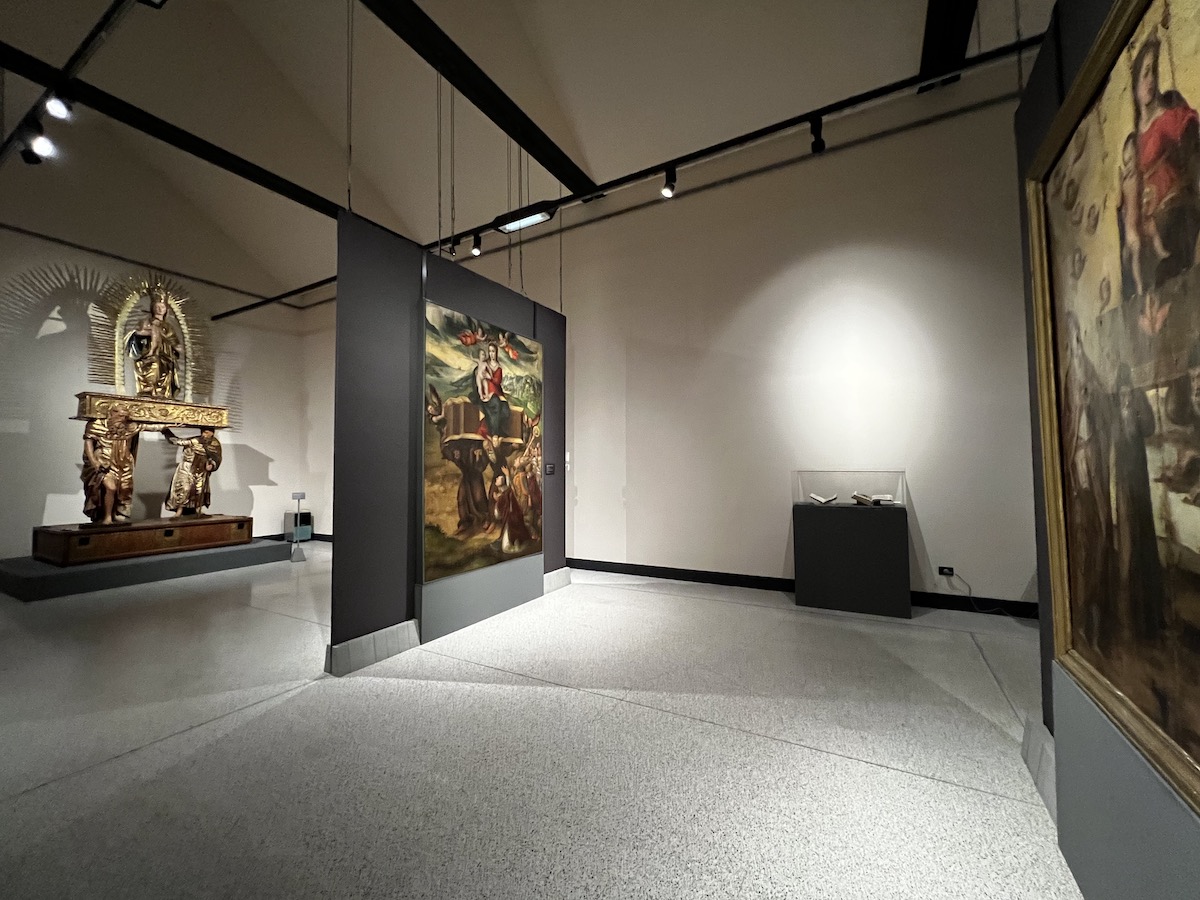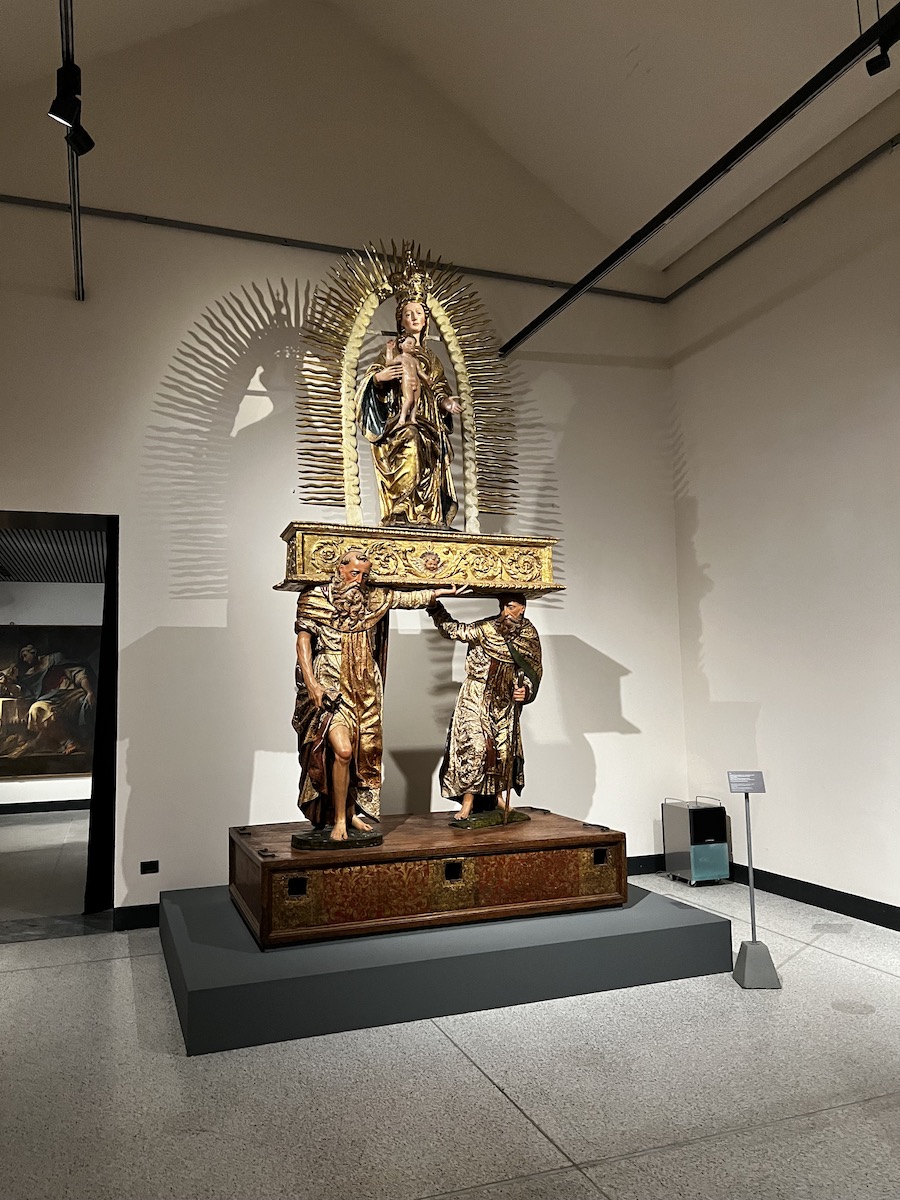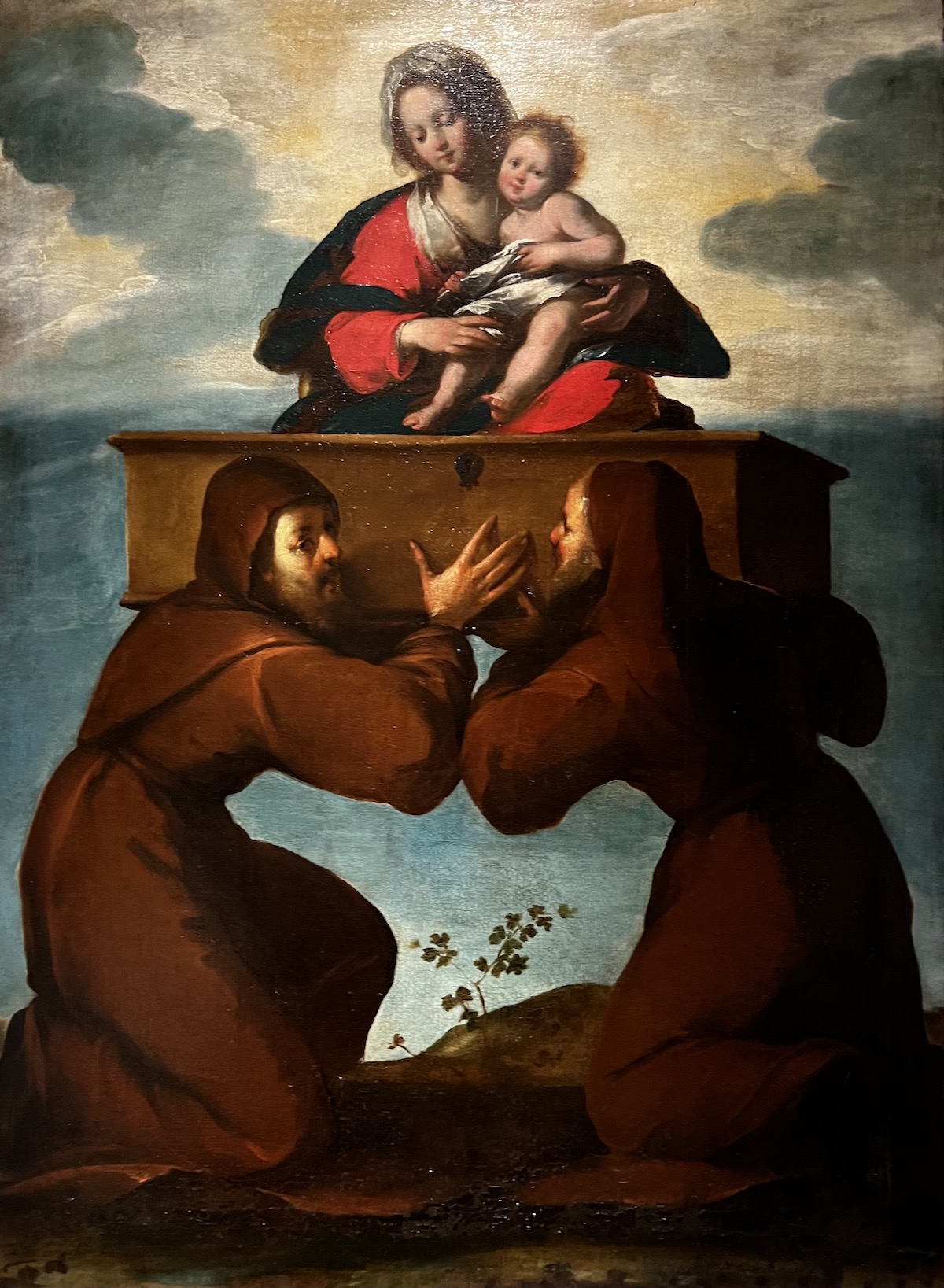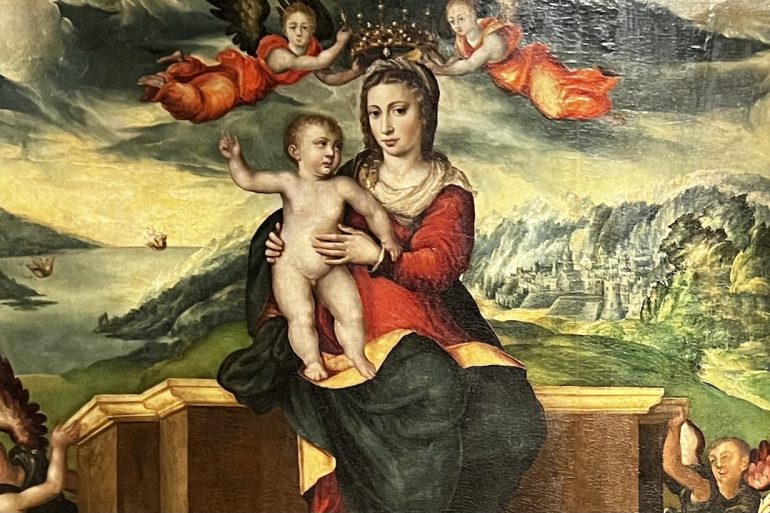
This post is also available in:


The Ala Ponzone Civic Museum in Cremona, in collaboration with the Diocesan Museum in Catania, is exhibiting: Sofonisba Anguissola and the Our Lady of Itria. The Cult of Hodighítria in Sicily from the Middle Ages to the Modern Age.
The exhibition, recently extended until August 21th, puts the spotlight on the work Our Lady of Itria, created by Anguissola, and Our Lady of Mercy, attributed to the artistic scope of Deodato Guinaccia.
This is an exhibition that goes beyond the mastery for the painter, a native of Cremona, and highlights, through the restoration of the works -realized thanks to the efforts of the Cremona City Council- a rigorous scientific project that expands knowledge about the artist to whom the museum paid tribute in 1994 with a monographic exhibition.
At the time of the monographic, the existence of the Marian painting, dating from the first period spent in Sicily (1973-1979), was not known since it was discovered only in 1995, thanks to the insight and expertise of Alfio Nicotra.
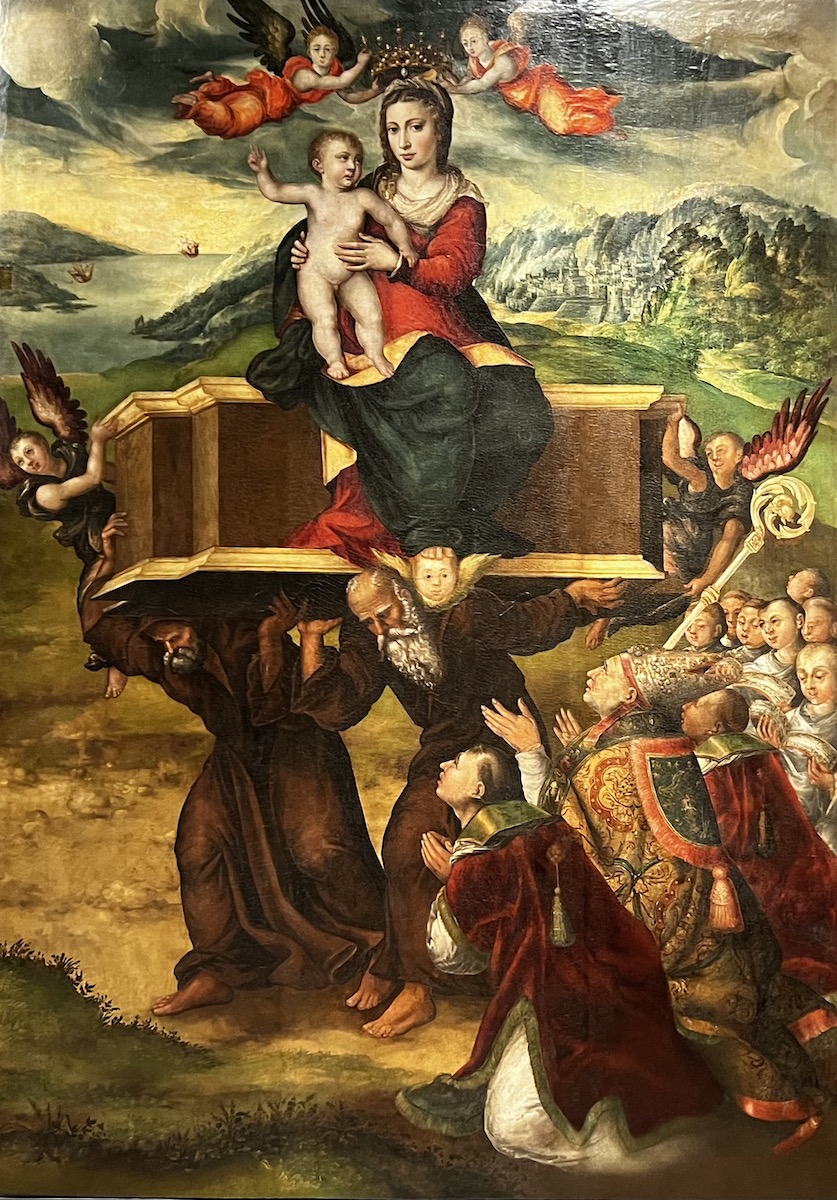
While a large body of literature provides information regarding the artist’s different painting periods -the years of her training, the period she spent at the Spanish court as tutor and art teacher, the period spent in Genoa where she maintained contact with the most important artists and intellectuals of the time, and the second Sicilian period where she died, in Palermo, over a hundred years old- very little is known about the pictorial period relating to Paternò when, through an arranged marriage by the Spanish monarchy, Anguissola became the wife of the Sicilian nobleman Fabrizio Moncada.
As a corollary to the two recently restored paintings, the Ala Ponzone Museum exhibits fresco tears, books, wooden and marble sculptures, and other paintings that elaborate on the theme of the iconographic transformation of the Our Lady in question, which began at least a century earlier: from the medieval Our Lady of Hodighítria, patroness of Sicily, to the more modern Our Lady of Itria (from the diminutive of the term Hodighítria).
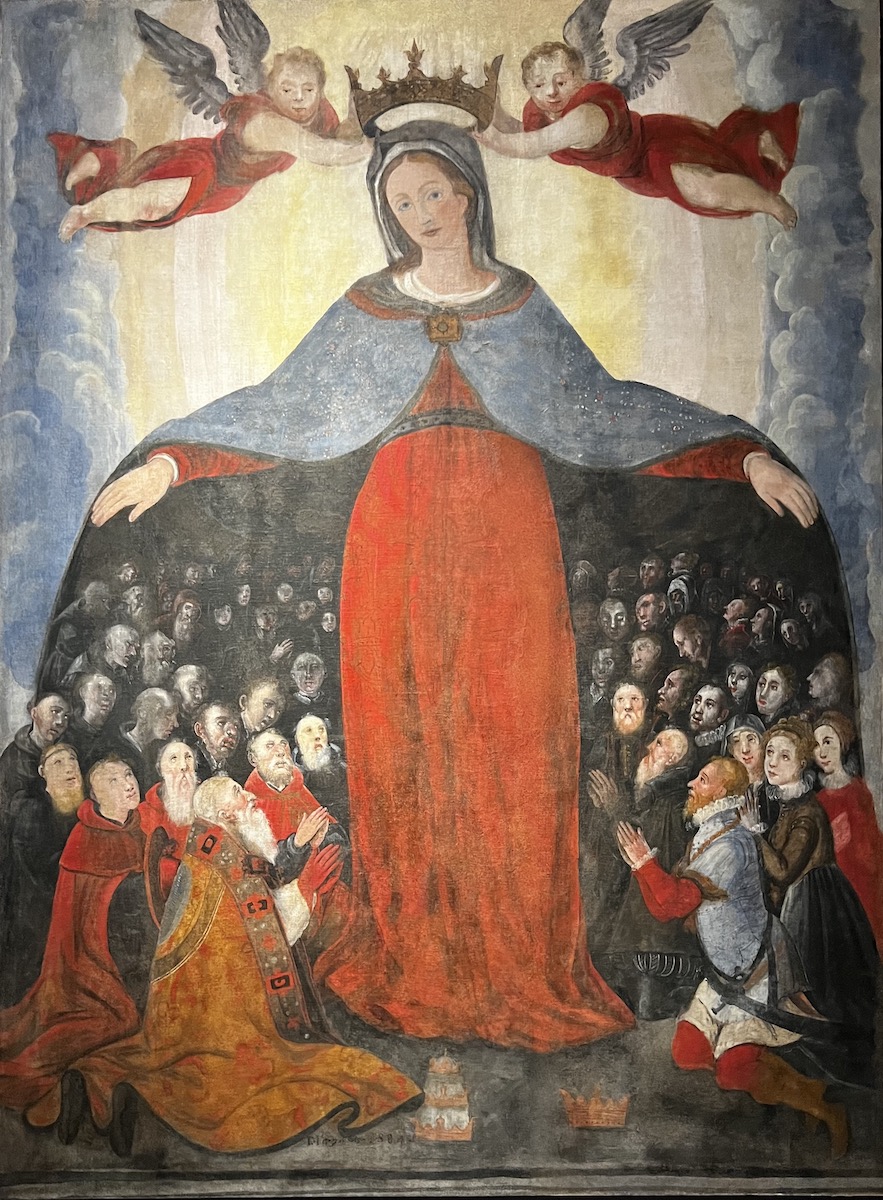
Our Lady of the Recommendation by a painter active in Sicily in the second half of the 16th century (Deodato Guinaccia?), 1573-1574. Tempera on canvas. Santa Maria dall’Alto Church in PaternòOur Lady of Hodighítria (or of Odigitria, also known as Our Lady of Constantinople) originated from a model transmitted from the Byzantine world that was later transposed, thanks to the Greek and Albanian communities that arrived from the Balkans, in the islands and southern regions of Italy.
Why then the cult of Our Lady of Hodighítria spread to southern Italy is explained by Father Carmelo Signorello in the exhibition catalog, published by Nomos Edizioni: “The causes that determined the arrival in Sicily of the icon of St. Mary Odigitria, for many centuries have been explained with various versions. It is certain, however, that since the iconoclastic period (especially 730-787) numerous replicas of this icon, along with a host of iconodule monks who wanted to save it from the irrepressible fury of the destroyers of sacred images, reached the regions of southern Italy. Then the second migration of Orthodox monks, who fled between the 15th and 16th centuries from the Balkans and Greece, still with the precious cargo of their venerated icons, but to save them this time from the Ottoman invasion, sheltering once again in southern Italy, helped to further spread the cult of the icon in that territory culturally akin to their homeland.”
According to Marian iconography, Our Lady of Hodighítria, is depicted half-length, with her head bowed and her gaze sad and pensive. She supports the seated Child in the act of blessing, whom the Virgin points to with her right hand. It is from the Virgin’s gestures that the term, of Greek etymology, originates, meaning, “she who leads, who shows the way.” Beginning in the 16th century, the image morphed into the more modern depiction of Our Lady of Itria in which the Virgin towers above a wooden chest carried on the shoulders of two Basilian monks, the “calogeri,” inspired by the rules of St. Basil (330-376). The presence of the monks in the painting refers to the legends concerning the theft and securing, inside a crate, of the miraculous icon purportedly painted by St. Luke himself.
Being also a painter, St. Luke had captured the features of the Virgin on the icon, which later became an object of worship and an iconographic model for every subsequent face of Mary. The icon was elected protector by the people of Constantinople before the final catastrophe in 1453, where, to save it from the destructive fury of the Ottomans, the monks who had custody of it would entrust it to the waves of the sea by which it arrived on the western shores.
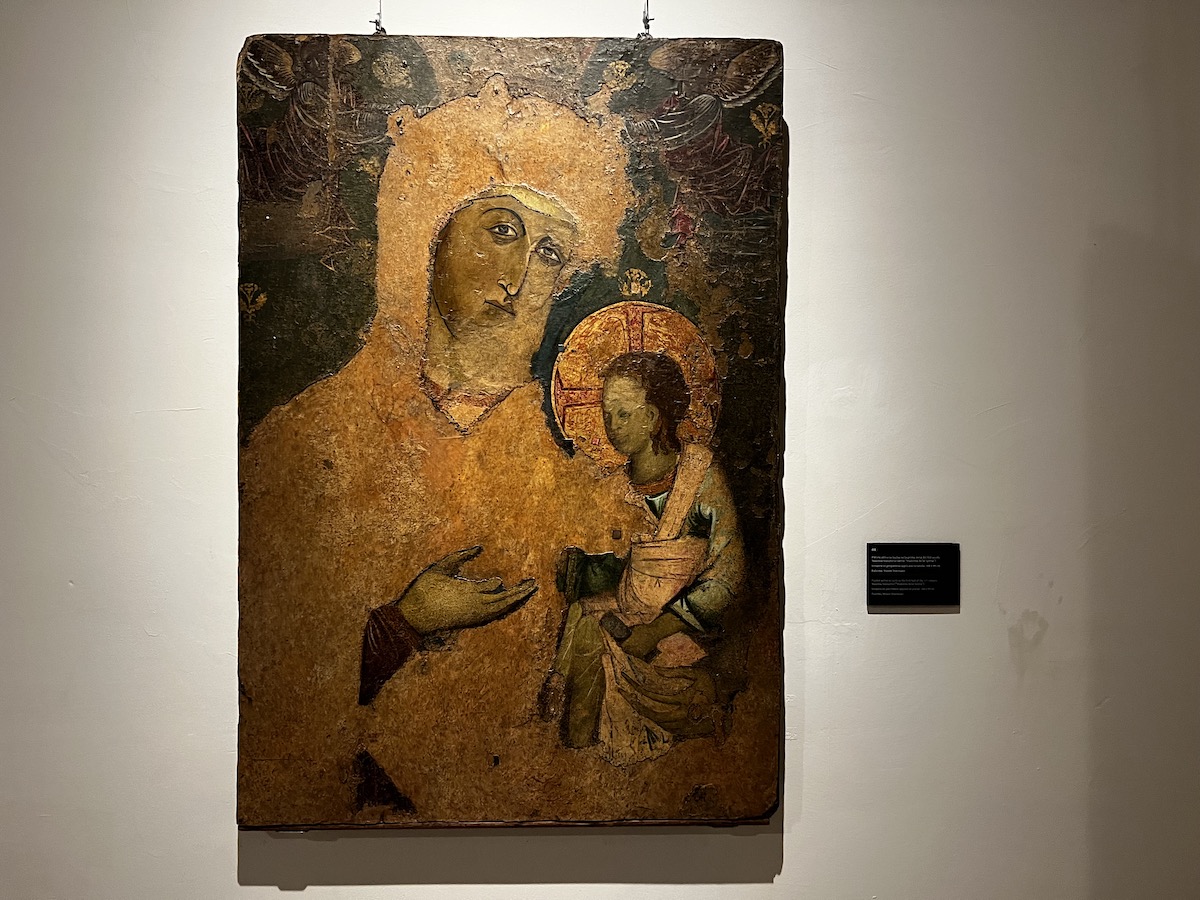
The Ala Ponzone Civic Museum’s exhibition begins precisely with the painting Panaghìa Hodighìtria, of the Our Lady of Hodighìtria, dating from the first half of the 13th century and also known as the Our Lady of Spersa, in reference to the episode of Jesus being lost in the Temple of Jerusalem. The Madonna with the piercing gaze has undergone numerous restorations and wears over time and has come to the present day missing some details such as the crown on her head.
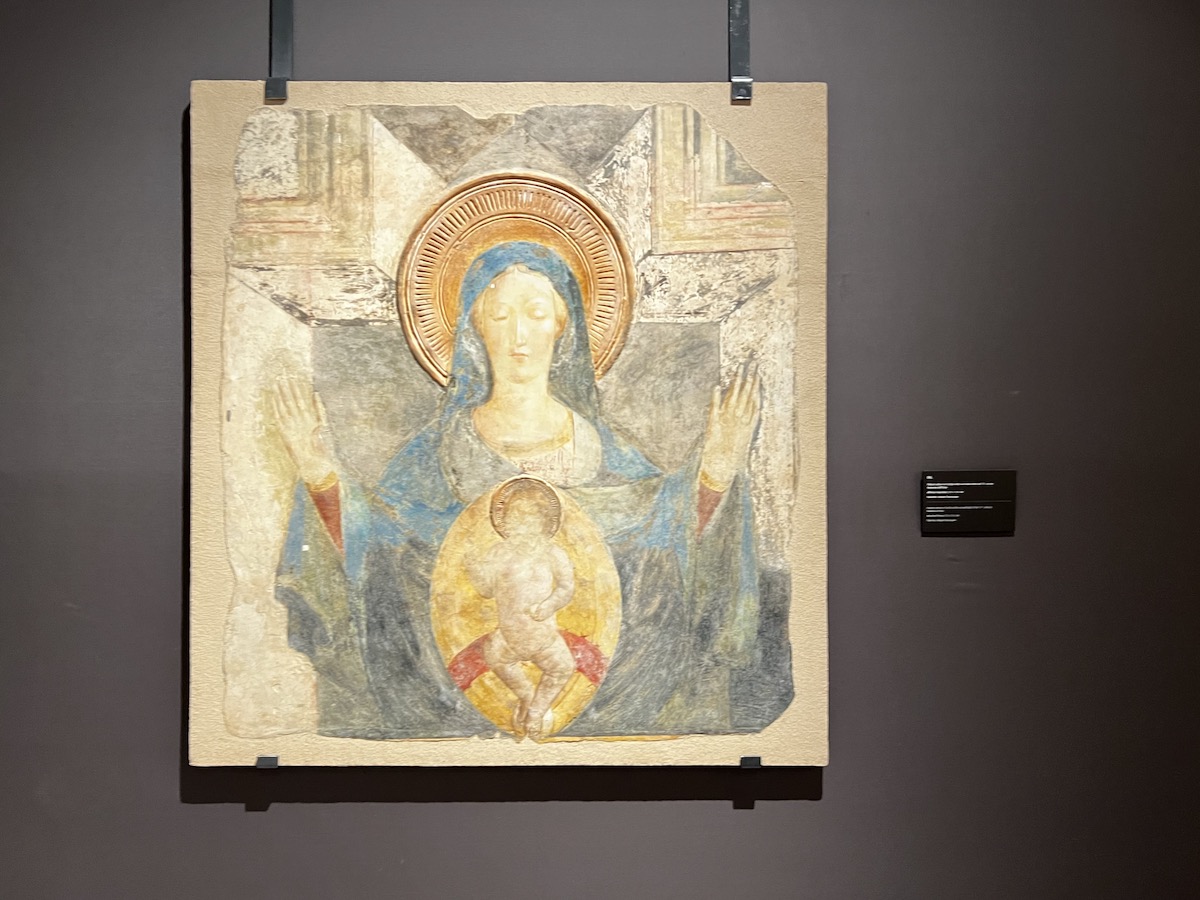
While in some versions from the first half of the 1500s for the Our Lady of Itria the depiction of the Child is represented in a clypeus in the Mother’s bosom, within a medallion on the bust or inserted within a mandorla of light prevails, in more recent works the depiction is the more modern one of the Mother and Son, seated on a bench and supported in procession by two calogeri monks while angels crown the Virgin. Examples of this are the paintings by: Antonio Maria Viani (c. 1595), Alessandro Allori (1590) and Giuseppe Alvino known as il Sozzo (The Filthy,1590). The paintings are juxtaposed with the impressive wooden work of Antonino Ferraro and Nicolò Buttafuoco (1597-1599) and the marble work of the Sicilian sculptor active in the second half of the 16th century. As for the drawings, the work in pen and watercolor ink, executed with quadrettatura, by Aurelio Lomi (1597-1604) is on display. On the writings front, however, the following texts are presented: Relatione della presa di due galere della squadra di Sicilia, by Pietro Antonio Tornamira (1618-1681), and Dell’Istoria ecclesiastica di Mantova by R.P.F. Ippolito Donesmondi minore osservante, volume 2 (1566-1630). Also among the images in the exhibition is Portrait of a Gentleman, considered a jewel because of the slight grayish veil that binds all the hues and suggests, in its realization, a work by El Greco or by Anguissola herself for her husband’s portrait. The work, although not in the artist’s style, could be attributed to the artist characterized, especially in the Genoese phase, by an easy evolution in the way of painting.
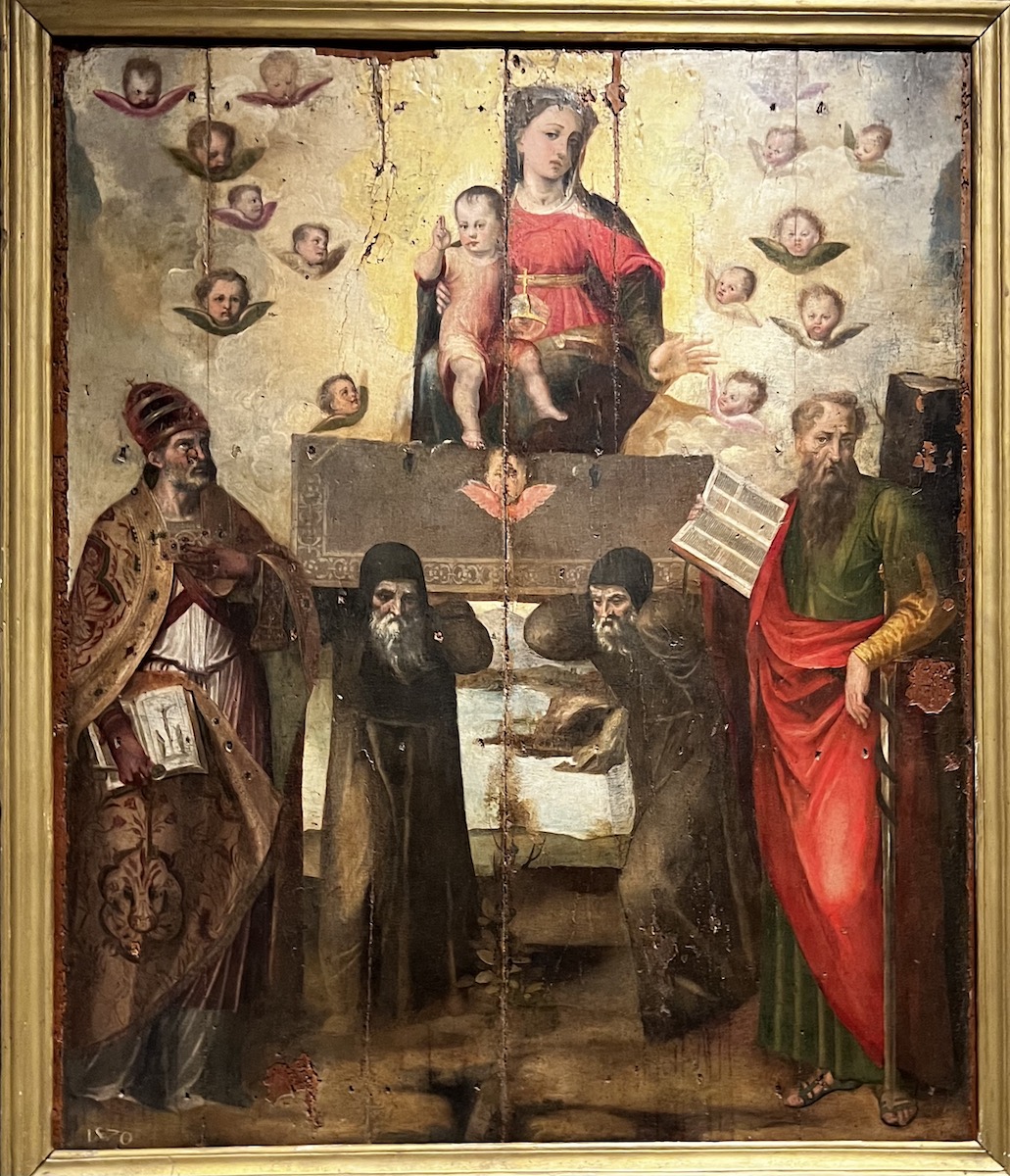
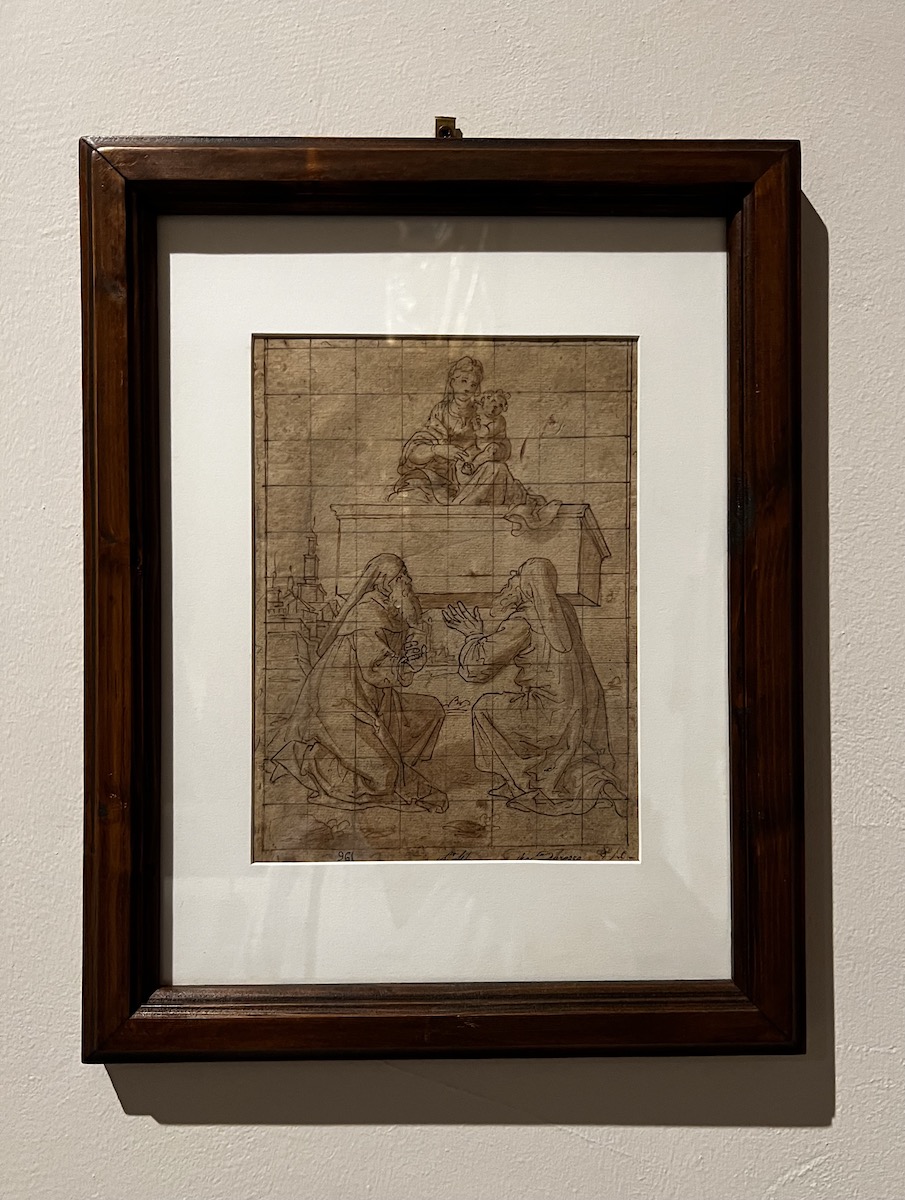
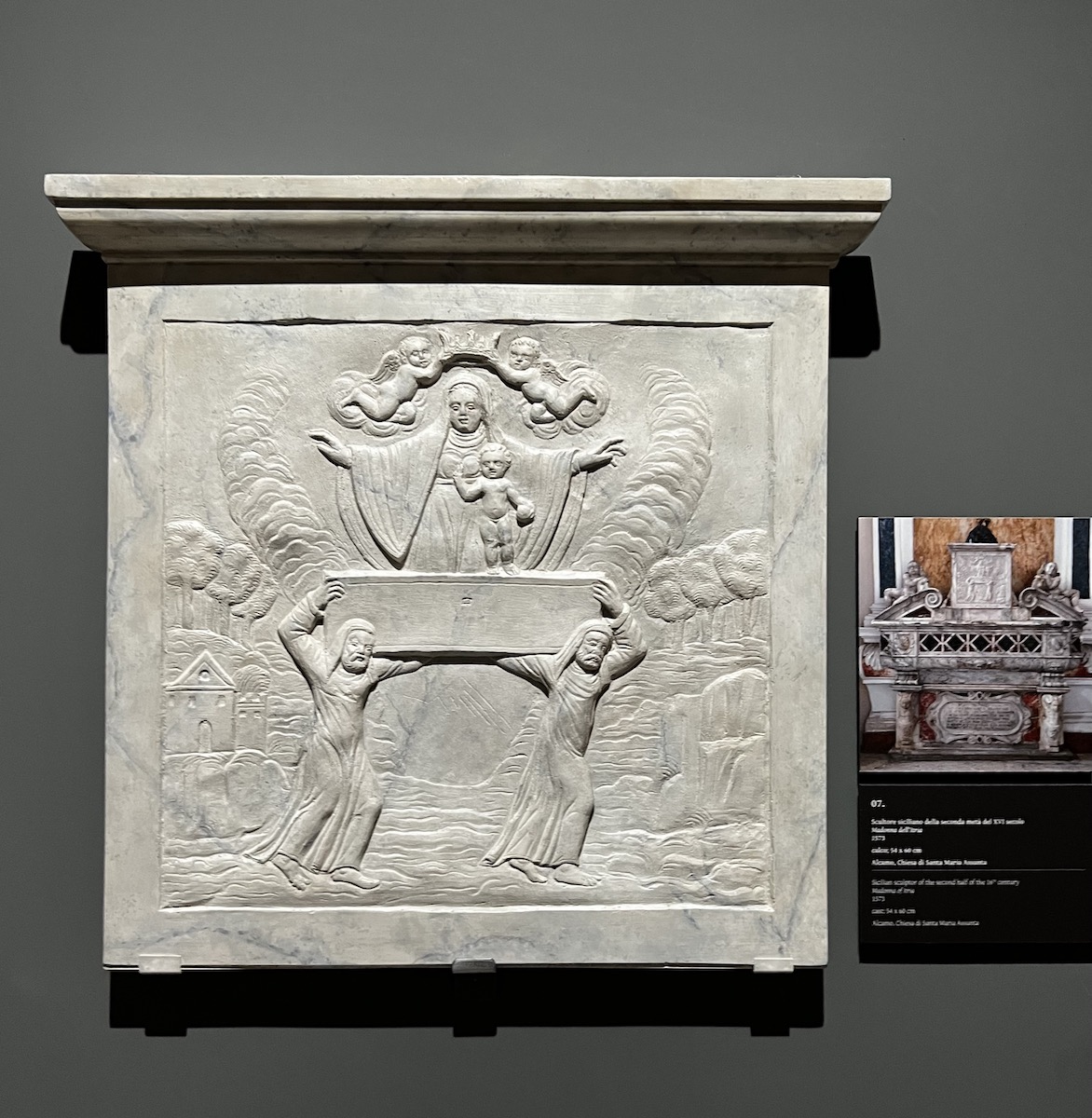
Our Lady of Recommended, a work also known as Our Lady of Mercy, is kept at the Church of Santa Maria dell’Alto in Paternò. It is the only work among those existing in Paternò that can be matched chronologically with Anguissola’s. It depicts the Virgin opening her cloak under under which the faithful -the recommended- find shelter.
Among the recommended are both religious (left) and lay people (right). If among the former it is possible to recognize the different hierarchies of the Church -among whom Pope Gregory XIII stands out- among the others one can recognize King Philip II of Spain with his fourth wife, Queen Anne of Austria. Following are some high representatives of the time, including: the Anguissola, in a red dress; her sister-in-law Aloisia de Luna, with a veil -symbol of widowhood-and a young man looking up and characterized in his clothing by a gaudy ruff that could be Fabrizio Moncada, Anguissola’s husband. The appearance and technique suggest that the work was originally conceived as a banner or occasion painting, becoming an altarpiece only later. Its recent recovery and restoration has made it possible to formulate new hypotheses also regarding the authors of the Our Lady of Itria, who are assumed to be the same as those of the Our Lady of Recommended and traceable, for certain technical aspects such as formal abbreviations and the polidoresque flicker- to the sphere of Deodato Guinaccia, recognized as active in those years in Messina.
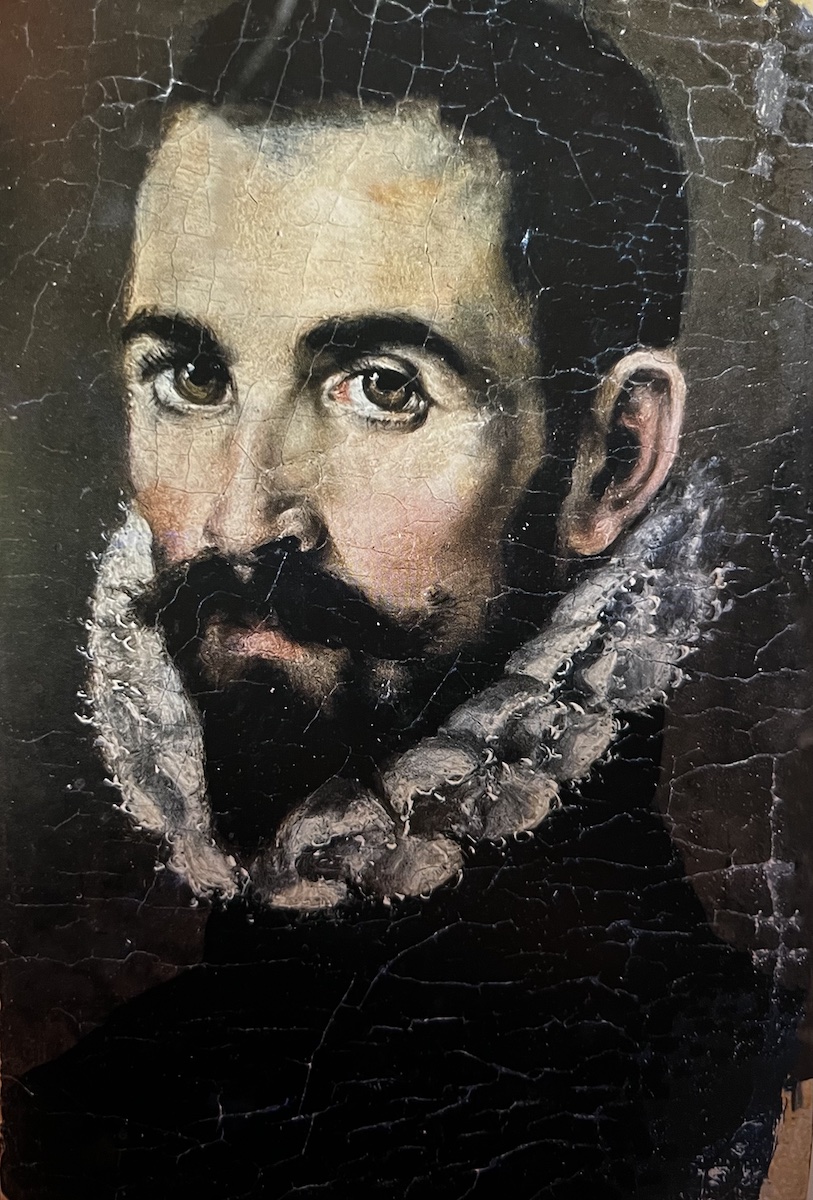
The altarpiece of the Our Lady of Itria, attributed to the artist, with its height of about 94.5 inch. is the largest painting Anguissola ever made. It is still unclear what the destination of the altarpiece, originally commissioned by Anguissola herself and her husband Fabrizio Moncada to a painter of the Neapolitan Deodato Guinaccia’s circle, was, it is known for certain that it was commissioned as an ex voto following the cessation of the terrible plague of 1576 in Paternò. Stylistic analysis shows that it was completed, in the figures of the Virgin, the Child and the background, by Sofonisba Anguissola herself and perhaps-as can be seen from the deed of gift made to the Franciscan convent of Paternò before she left the island on June 25, 1579-also by the artist’s own husband. Indeed, different levels of quality are evident from the restoration of the work, suggesting that it was the work of several hands: in addition to the broad strokes of painting referable to the artist from Cremona, small portions with simplified and naive strokes alternate, probably attributable to the intervention of her husband Fabrizio Moncada. A second theory, somewhat weak, suggests instead the intervention of Anguissola’s grandson, Francesco, who later became an artist. A theory that chronologically does not seem reliable because of the young age the child may have been in those years. However, the discovery of the altarpiece suggests the existence of an artistic workshop of Anguissola’s in Paternò, with which she may have initiated, in the area, the process of aristocratic amateurism well known in the Moncada household.
Before arriving at the headquarters of Santissima Annunziata, where it is displayed today, the altarpiece was moved to the ancient matrix of Santa Maria dell’Alto.
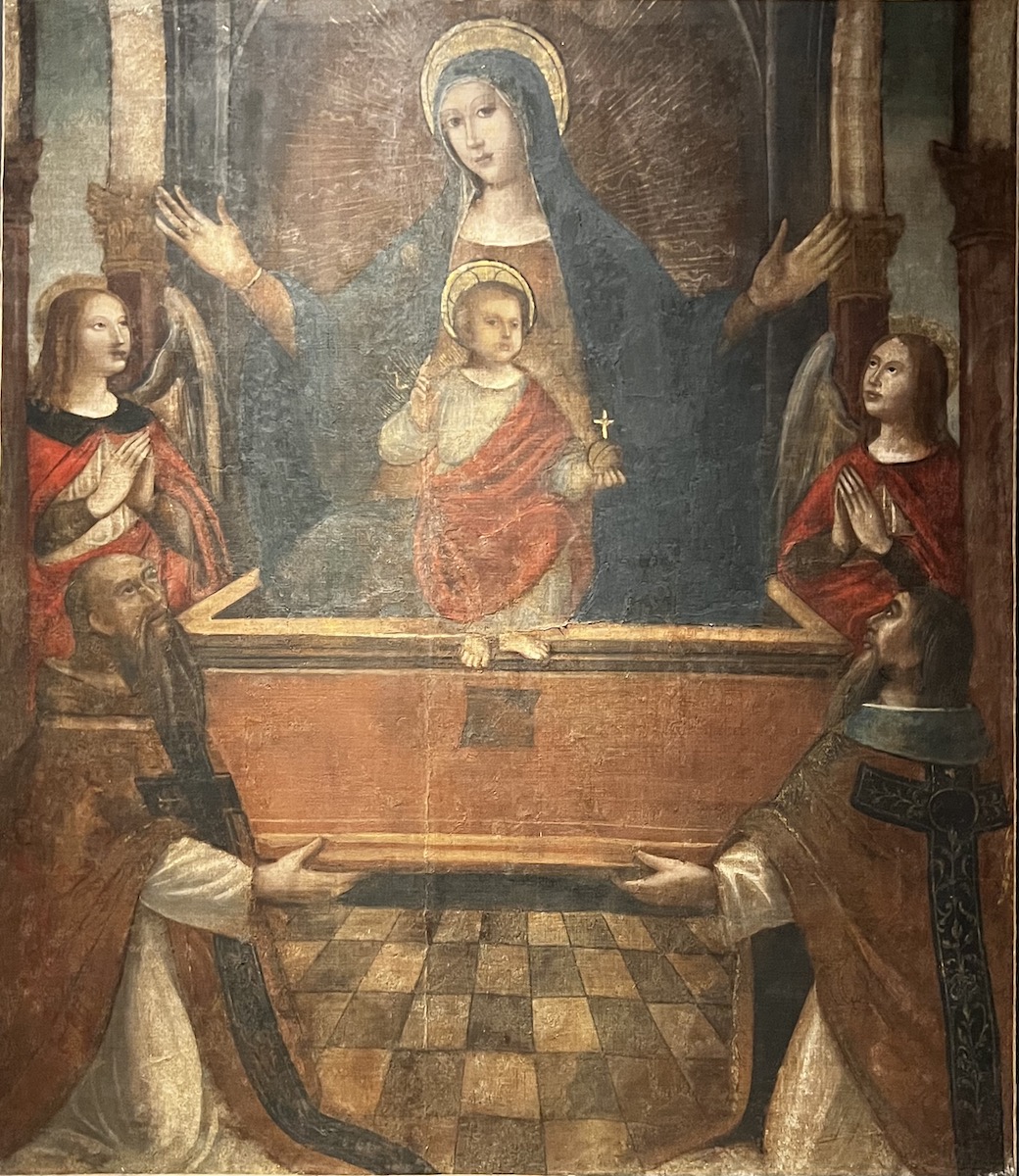
In addition to the variation of Marian representation already begun a century earlier in Anguissola’s Our Lady of Itria, the Cremonese artist summarizes and updates the iconographic transformations of the Our Lady Ogiditria. With them she expresses all the magnificence that characterizes both the late Renaissance and her body of work. Anguissola’s Our Lady has a sweet gaze while the rendering of her complexion renders her the grazia plena that makes her blessed among all women. The Child, on the other hand, abandons the features of Byzantine iconography and is shown naked, as if to emphasize his having become a man among men, and it is he himself who shows the way to the faithful, situated in a wooded and venerating crowd-composed of clergy and people-at the feet of the Virgin. The atmosphere of the painting is crowned by the background emphasizing the drama of the scene.
The Our Lady of Itria altarpiece, which was previously exhibited in Milan at the Royal Palace on the occasion of the exhibition The Ladies of the Art, will continue after Cremona with an exhibition from Aug. 12 to Dec. 4 in the rooms of the Diocesan Museum in Catania.
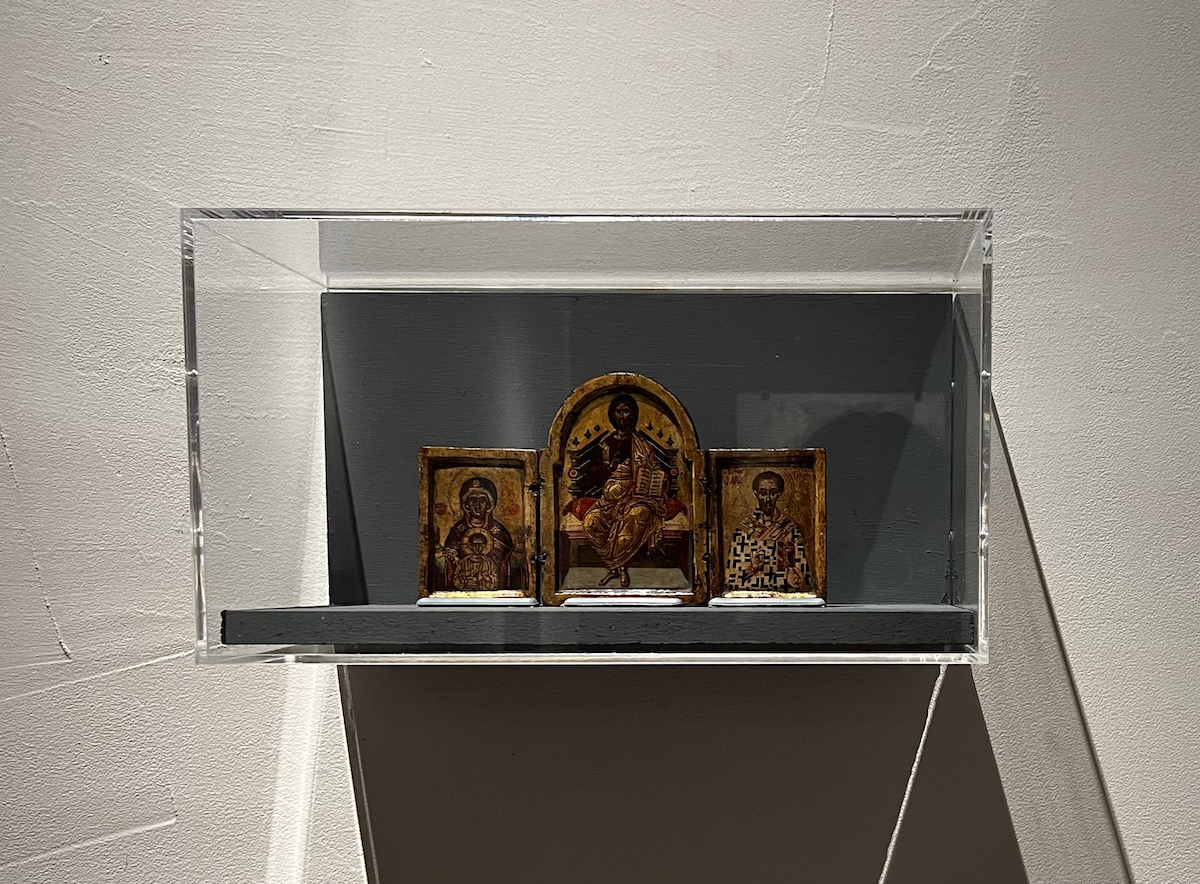
Some great figures have spoken of Sofonisba Anguissola and her talent: Michelangelo, who considered her a woman of great talent, and Vasari, who mentioned her in: The Lives of the Most Excellent Painters, Sculptors, and Architects, the first modern treatise on art history.
Among the most famous and intriguing artists in history, the artist returned to the city of her birth and did so in the splendid setting of the Ala Ponzone Civic Museum. The museum, at the center of the famous City of the Violin, of which it also reveals a part of history, in addition to exhibiting works by Caravaggio, Arcimboldo, and Rosalba Carriera, presents an extraordinary collection of Cremonese artists, including Giovanni Battista Trotti, known as Il Malosso, and Giuseppe Diotti (from Casalmaggiore, CR).
